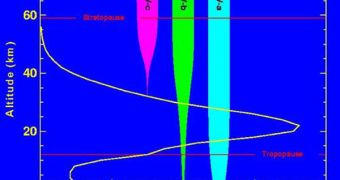Over the 20th century, mankind has emitted a number of dangerous chemicals into the atmosphere, of which the most damaging to the planet have been chlorofluorocarbons (CFC). These substances have had a direct and adverse effect on the ozone layer, making it thinner over the years, and finally breaching it over Antarctica. Through the Montreal Protocol, nations affirmed their commitment to eliminating the production of these aerosols, and began to phase them out in 1987. By 1996, all emissions had been stopped. Still, a new NASA study suggests that recovery is now impeded by climate change and atmospheric circulation.
After the historic moment of eliminating CFC some 13 years ago, climatologists have waited and waited for the ozone layer to show signs of improvement. And while it, indeed, stopped deteriorating at an alert pace, it failed to recover in the manner expected of it. Now, experts at NASA believe that this happens because normal atmospheric circulation is impeded by climate change. In other words, the regular motion of air in the atmosphere is changing, and deprives the ozone layer of new molecules.
“Most studies of ozone and global change have focused on cooling in the upper stratosphere. But we find circulation is just as important. It's not one process or the other, but both,” Feng Li, who is the lead author of the new study and also an atmospheric scientist with the Goddard Earth Sciences and Technology Center at the University of Maryland Baltimore County, in Baltimore, explained in a press release.
“In the real world, we have observed statistically significant turnaround in ozone depletion, which can be attributed to the banning of ozone-depleting substances. But making that connection is complicated by the response of ozone to greenhouse gases,” Goddard atmospheric chemist Richard Stolarski, who is also one of the co-authors of the new paper, added. The study appeared in the March issue of the scientific journal Atmospheric Chemistry and Physics.
The expert said that ozone might recover at the planet's middle latitudes, maybe even to levels higher than those recorded before CFC started affecting it. But they also suggested that tropical latitudes might not benefit from the same recovery, on account of their shifting stratospheric air movements. The process will most likely be lengthy, and the changes will not be visible very soon.

 14 DAY TRIAL //
14 DAY TRIAL //